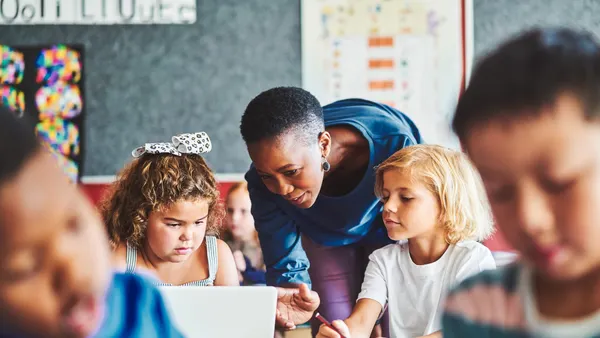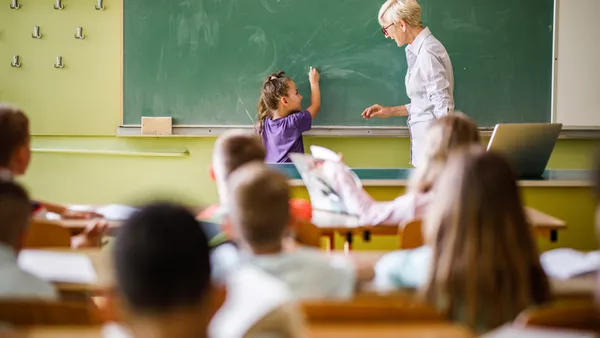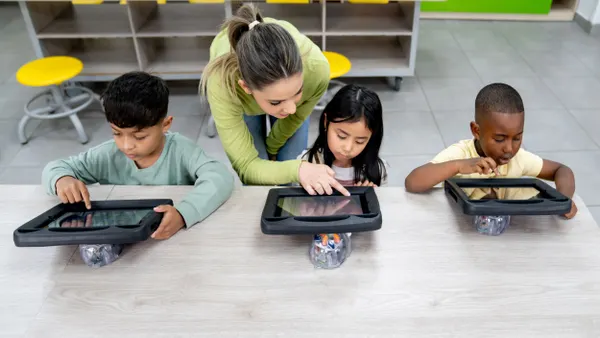Dive Brief:
-
School-wide social-emotional learning (SEL) programs in middle and high schools tend to be less effective than those for students in the elementary grades, and more research is needed to determine why that’s the case, according to a new research brief discussed Friday at a policy forum in Washington.
-
But the authors — Celene Domitrovich of the Early Childhood Innovation Network and Georgetown University, Amy Syvertsen of the Search Institute and Sophia Calin, an independent research consultant — add that even small to medium effects are “worthwhile” if they can prevent students from dropping out in high school.
-
They suggest that SEL programs for older students should consider the unique needs of young adolescents, such as a sense of identity, increasing autonomy and a desire for acceptance, and they note that it’s also important to understand how school-based SEL initiatives work in tandem with students’ out-of-school activities to promote social-emotional competencies. The combination of “individual competence and positive learning environments is likely to be the most effective approach to SEL at the secondary level,” they write.
Dive Insight:
The brief is helpful in that organizes SEL programs into four categories. Skill-focused promotion uses an “explicit instruction” approach and includes programs such as Second Step. An academic integration approach, such as Facing History and Ourselves, weaves SEL into the curriculum. Teaching practices emphasize positive student-teacher relationships and peer interaction, and organizational reform might include teachers looping with students to the next grade, community-based learning opportunities and partnerships with families.
An SEL model, they write, should include a “give-and-take” between students and adults, opportunities for students to “practice, develop, and refine” their skills and a “gradual shift” toward allowing students to have more input into decisions.
The findings help to increase administrators’ knowledge about the types of SEL initiatives they are implementing. “Schools need to be wise consumers of existing programs,” they write, “and consider what they can realistically expect from a program, what it takes to implement the program effectively, and whether the program is a good match to the needs of staff and students.”







 Dive Awards
Dive Awards






